
Margins are tight, mistakes are expensive, and there’s no room for downtime when every job’s on the clock. U.S. construction profits now average just 5% (with some regions dipping below 4%), leaving little room for gear that can’t deliver under pressure.
That’s made surveying equipment more than a tool—it’s your front line. GNSS receivers now anchor modern field workflows, capturing live positioning data across wooded lots, urban corridors, and remote build sites without reshoots or rework.
In 2025, the U.S. surveying and mapping market reached $11.5 billion. That growth signals a shift: more firms are modernizing, more crews are syncing software with satellite tools, and more pressure to do it all faster and cleaner. For decision-makers, it’s no longer about which receiver looks good on paper. It’s about which one fits your terrain, software stack, and daily pace.
This guide was built for field-smart professionals (licensed surveyors, GIS specialists, civil engineers) choosing land survey equipment that their teams will depend on every day.
At Harper Surveying, we’ve helped crews deploy GNSS receivers across every kind of terrain. We’ve seen what holds up, what integrates cleanly, and where specs break down. That field-tested insight shapes the comparison ahead.
Meet the Ground Survey Equipment Contenders: Carlson BRx7 and Trimble R980
The Carlson BRx7 and Trimble R980 are field-deployed, crew-tested receivers designed for daily use in unpredictable terrain. If you’ve ever lost a measurement reading near a tree line or waited for a reconnect downtown, you know why every second matters.
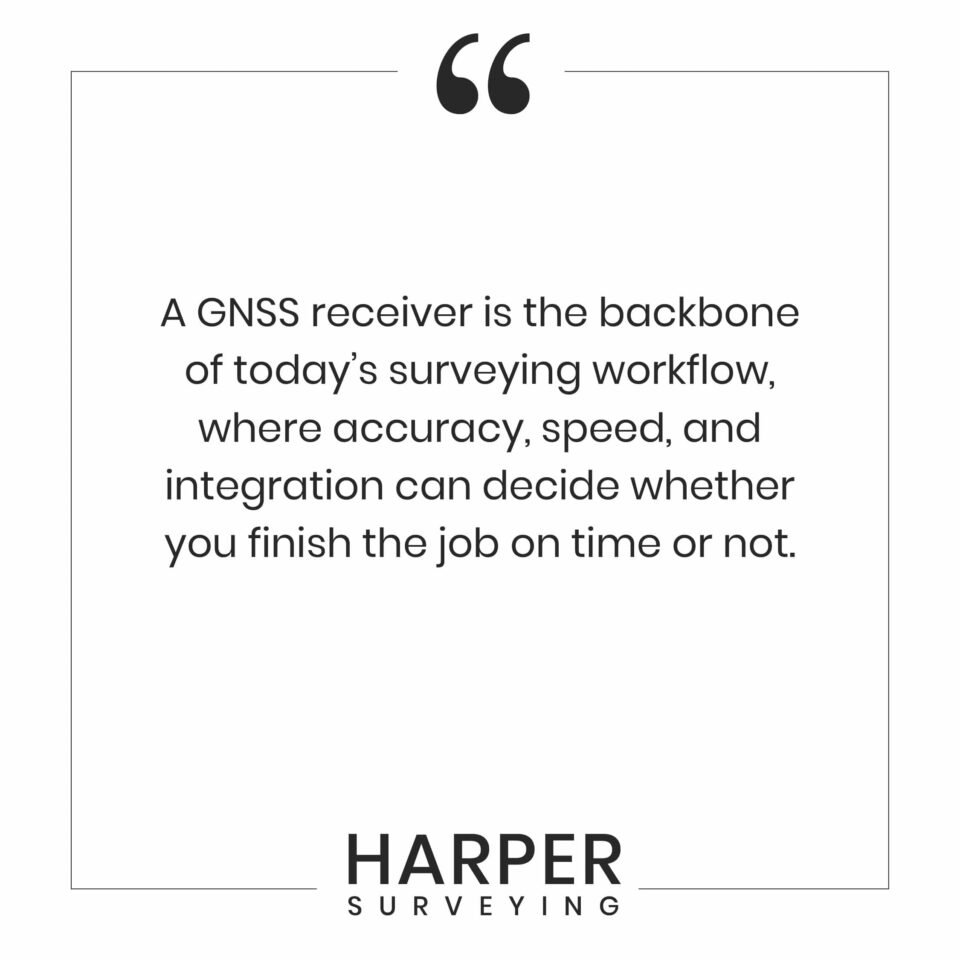
A GNSS receiver is the backbone of today’s surveying workflow, where accuracy, speed, and integration can decide whether you finish the job on time or not.
The BRx7 and R980 are current-generation land surveying equipment systems trusted by professional crews. They aim for the same outcomes, but how they get there varies in ways that can tip your choice.
Feature Comparison: GNSS Receivers Where It Counts
Let’s examine the critical differences between the Carlson BRx7 and Trimble R980 in their most important areas: signal hold, workflow speed, and daily reliability.
Satellite Tracking and Accuracy
The BRx7 and R980 support full multi-constellation tracking: GPS, GLONASS, Galileo, and BeiDou. But their performance under obstruction isn’t identical.
![]()
The BRx7 is exceptionally resilient in wooded or semi-obstructed areas, maintaining sub-inch fixes even with a partial sky view. Trimble’s R980, on the other hand, is tuned for precision in open-sky environments but may recover more slowly after signal disruption in mixed terrain.
Key field-facing differences:
- Acquisition speed: BRx7 locks the initial fix in approximately 8 seconds. R980 averages slightly faster in an open sky.
- Canopy resilience: BRx7 holds better under tree cover.
- Signal refresh: R980 updates rapidly in strong conditions, while BRx7 is more stable under shifting skies.
This is where GNSS receiver comparison turns practical. If your sites shift between suburban lots and wooded backlines, the BRx7 may give you fewer pauses and better uptime.
RTK Real-Time Performance
The Carlson BRx7 initializes in under 10 seconds using its Athena engine and SureFix® validation, built to hold stable RTK in semi-obstructed terrain. Trimble’s R980 uses the ProPoint engine with TIP tilt compensation to reacquire quickly after dropouts. It can reestablish RTK in as little as 2 seconds in open conditions. Its IMU supports fix recovery when returning upright, keeping work moving without reset lags.
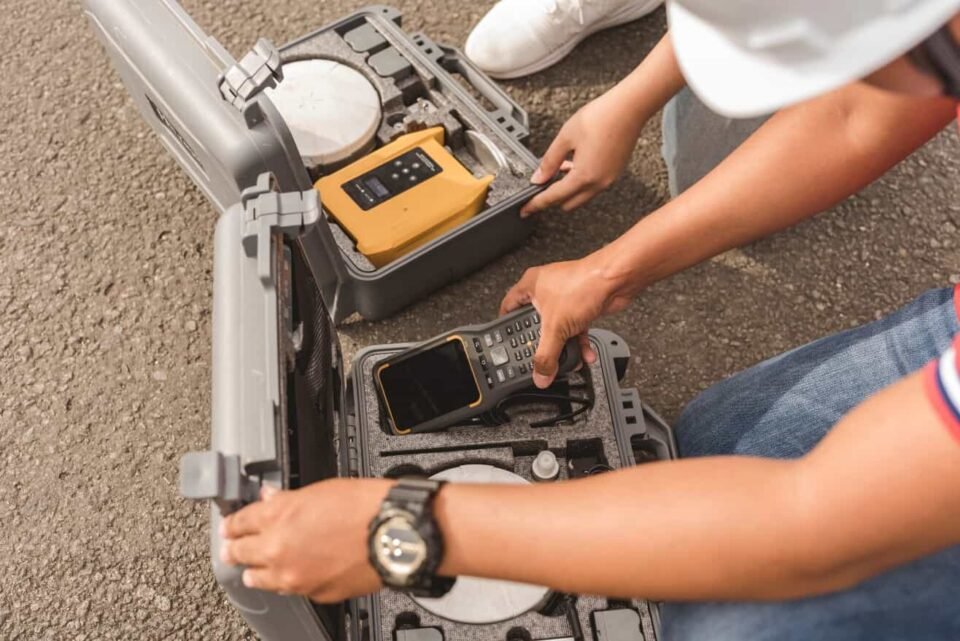
What to expect:
- Fix time: About 10 seconds for BRx7. Two to 8 seconds with an open sky for R980.
- Recovery: R980 favors rapid reacquisition. BRx7 emphasizes fixed stability.
- Mixed terrain: BRx7 performs well in a canopy with variability by obstruction.
Both units are fast. The BRx7 favors fixed confidence across conditions. The R980 favors speed when conditions shift. Choose based on how often your line of sight breaks.
Design, Durability, and Field Readiness
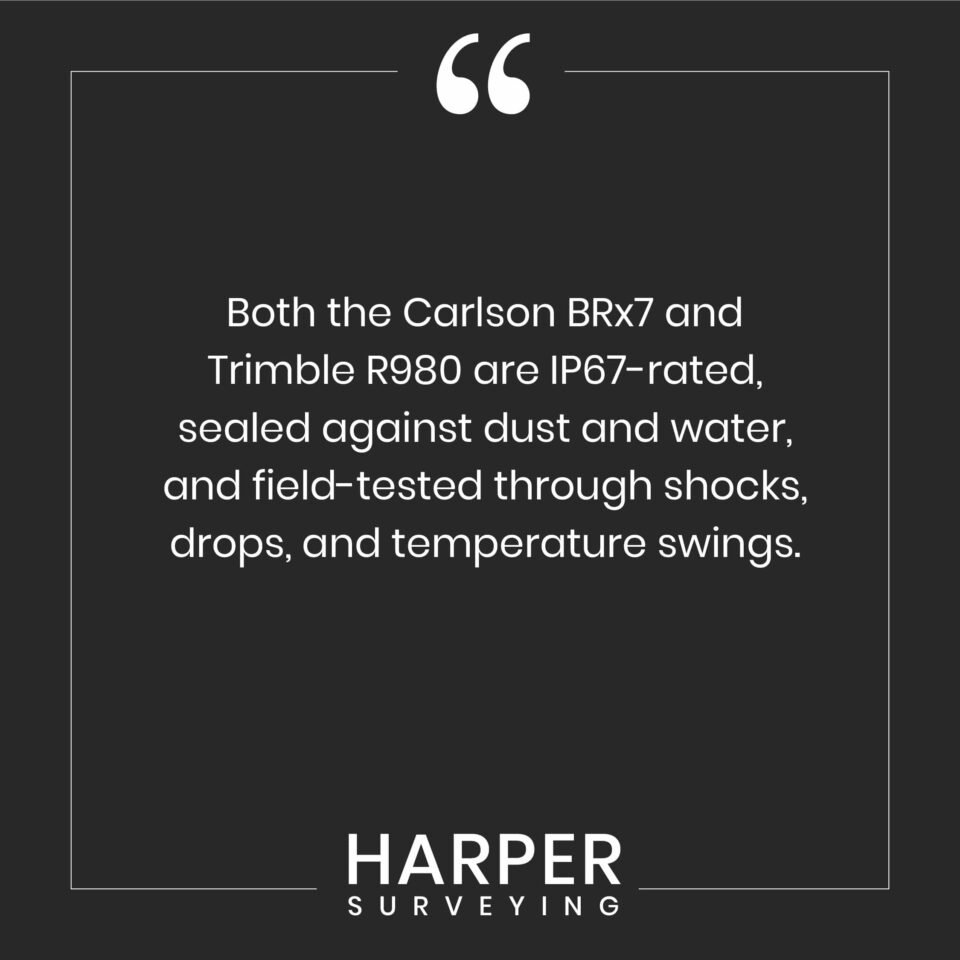
The Carlson BRx7 and Trimble R980 are IP67-rated, sealed against dust and water, and field-tested through shocks, drops, and temperature swings.
Ground surveying equipment isn’t handled gently. So, the Carlson BRx7 and Trimble R980 are IP67-rated, sealed against dust and water, and field-tested through shocks, drops, and temperature swings.
The BRx7 runs from –22°F to 149°F (–30°C to 65°C) and weighs around 2.5 lbs with the battery. Its compact frame makes it easier to handle and faster to mount, especially in wooded terrain or quick-deploy jobs.
The R980 brings added muscle: MIL-STD-810G compliance, a magnesium housing, the same temperature range as the BRx7, and is slightly heavier but equally compact.
Field-reported takeaways:
- Portability: BRx7’s slimmer profile makes for faster carry and swaps.
- Ruggedness: R980’s magnesium shell and shock rating hold up in harsher handling.
- Mounting: Both support standard poles, tribrachs, and backsight hardware.
If your gear sees more field than foam padding, the R980 may take more hits. But if speed, carry weight, or agility matter more, the BRx7 holds its own and keeps pace.
Battery Life & Runtime
The Carlson BRx7 runs two 3400 mAh batteries in a true hot-swap setup, supporting up to 12 hours of continuous use in rover or base mode. Add an external power kit, which can carry multi-day base deployments without a reset.
The Trimble R980 ships with a single 3.7 Ah smart battery rated for about 6 hours in UHF receive mode or up to 7 hours on LTE. It’s field-swappable, but not hot-swappable, so you’ll need to power down to change batteries.
In-field expectations:
- RTK runtime
BRx7: up to 12 hours
R980: 6 hours (UHF) or 7 hours (LTE) - Battery swap process
BRx7: seamless hot-swap
R980: full removal and reboot required - Heavy usage performance
BRx7 maintains longer runtime under Wi-Fi or radio load
R980’s runtime dips faster in high-output tasks
If your crew logs full-day surveys or sets up base stations before dawn, the BRx7’s battery setup gives you more operational runway. But if your batteries are queued and your sessions are tight and tactical, the R980 can still meet the moment, just with more swap planning.

Specs to visualize:
- Runtime: BRx7 (up to 12 hrs) vs. R980 (6–7 hrs)
- Battery type: BRx7 (hot-swap dual) vs. R980 (single, power-down required)
- Use cases: BRx7 (long base setup, all-day surveys) vs. R980 (short bursts, hot climates with swaps queued)
Connectivity and Workflow Integration
The Carlson BRx7 prioritizes open compatibility. It syncs with SurvCE/SurvPC, handles real-time corrections over Listen-Listen or NTRIP, and pushes data wirelessly to the office. However, the Trimble R980 leans into vertical integration, pairing with Trimble Access and CenterPoint RTX for tight ecosystem control and remote firmware updates.
What the systems support:
- Cellular connectivity
BRx7: 4G LTE with SIM slot for Listen-Listen or NTRIP corrections
R980: LTE/3G fallback, streaming IBSS or Trimble RTX - Wi-Fi + Web UI
Both enable remote config, status checks, and firmware updates in the field. - Bluetooth
BRx7: Dual mode for SurvCE/SurvPC pairing and live monitoring
R980: Trimble controller sync and file transfer support - UHF Radio
BRx7: 400/900 MHz internal, supports base/rover and Listen-Listen overlay
R980: 450/900 MHz, supports Pacific Crest and SATEL protocols - Software fit
BRx7: Carlson SurvCE/SurvPC
R980: Trimble Access + Business Center
Both GNSS receivers are built for modern land surveying equipment workflows, but one favors modular flexibility. The right choice depends on how your data flows, what your crew already runs, and how much control you need from field to office.
Software Ecosystem, Support, and Future-Proofing
Firmware Evolution
- Carlson BRx7: Receives regular updates via SurvCE/SurvPC or WebUI. Recent releases (e.g., GNSS 6.1Aa01) introduced ionosphere shielding, RTK accuracy gains, and expanded support for signals like Galileo HAS.
- Trimble R980: Uses Trimble Installation Manager with versioned firmware control and lifecycle tracking. Firmware v6.40 (Mar 2025) added ProPoint tuning, OSNMA authentication, and more stable RTX performance.
Platform Longevity
- BRx7: prioritizes lean firmware architecture, faster updates, minimal bloat, and strong compatibility with emerging GNSS services.
- R980: Built for continuity within the Trimble ecosystem. Long-term alignment with Access and Business Center ensures modular upgrades and multi-year usability.
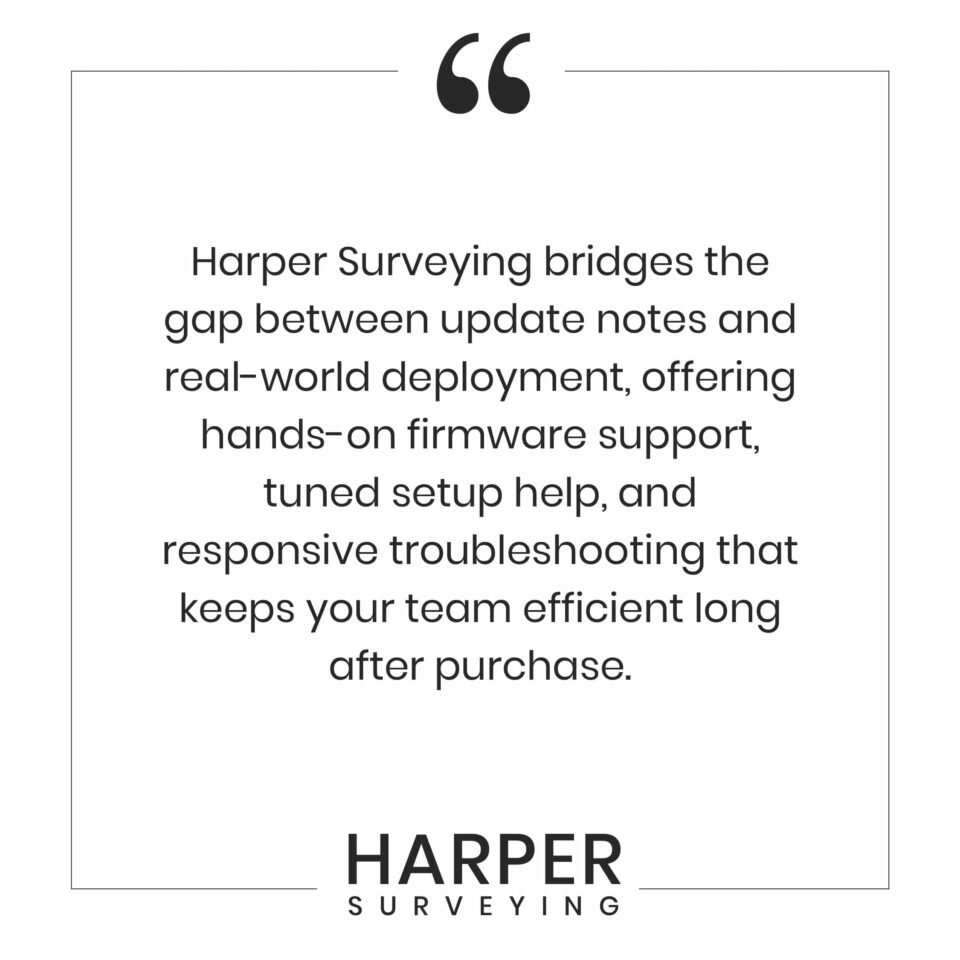
Harper Surveying bridges the gap between update notes and real-world deployment, offering hands-on firmware support, tuned setup help, and responsive troubleshooting that keeps your team efficient long after purchase.
Land Surveying Equipment Pricing, ROI, and Long-Term Value
Carlson BRx7
- Receiver price: $8,900
- Includes: Dual-band UHF radio, 4G LTE modem
- Add-ons: Optional Listen-Listen RTK cloud (about $500/year)
Trimble R980
- Receiver price: $10,900
- Includes: 4G LTE, UHF radio, 1-year RTX subscription
- Add-ons: Trimble TSC controller ($5,000 to $10,000), RTX renewals
ROI Considerations
- BRx7: Delivers top-tier GNSS capability at mid-tier cost—ideal for teams that need performance without committing to a closed software ecosystem.
- R980: Built for crews already running Trimble Access and RTX. It earns its premium if your projects depend on remote corrections, automated logging, and long-term support plans.
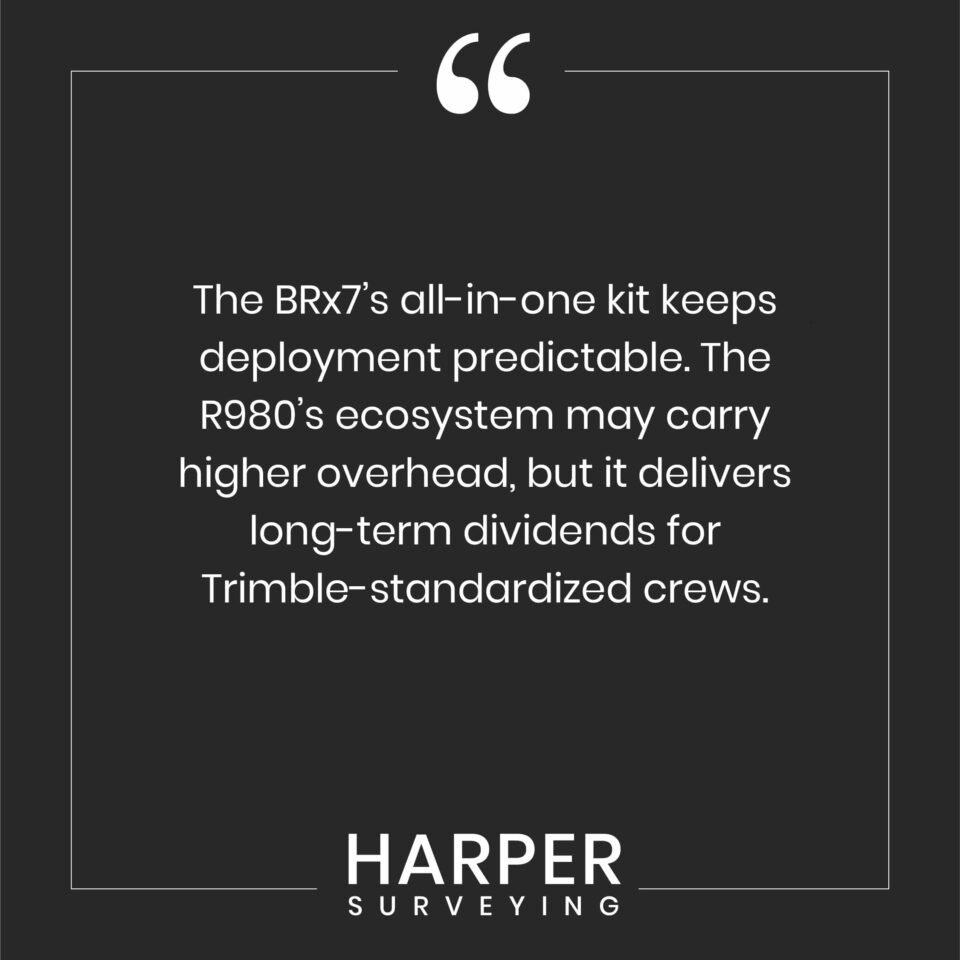
For large field teams, scaling costs matter. The BRx7’s all-in-one kit keeps deployment predictable. The R980’s ecosystem may carry higher overhead but delivers long-term dividends for Trimble-standardized crews.
For more information, ask us about upgrade paths, bundling discounts, or trade-in options for your current GNSS gear.
Choosing the Right GNSS Receiver for Your Field Reality

| Use case/environment | Carlson BRx7 | Trimble R980 |
| Mixed-software crews | Yes | No |
| Trimble workflows | No | Yes |
| Remote RTX reliance | No | Yes |
| Budget-conscious teams | Yes | No |
| Large crew scale-up | Yes | Yes |
The most advanced surveying equipment isn’t always the best fit. What matters is how well your receiver matches your site conditions, team habits, and future needs.
Choose the Carlson BRx7 if:
- You need flexibility across crews, roles, or software
- You want strong performance without locking into a closed ecosystem
- Your team prioritizes value—mid-tier spend, top-tier results
Choose the Trimble R980 if:
- You’re already using Trimble Access and TSC controllers
- You rely on RTX in remote zones or high-output environments
- You want streamlined support and end-to-end Trimble workflow alignment
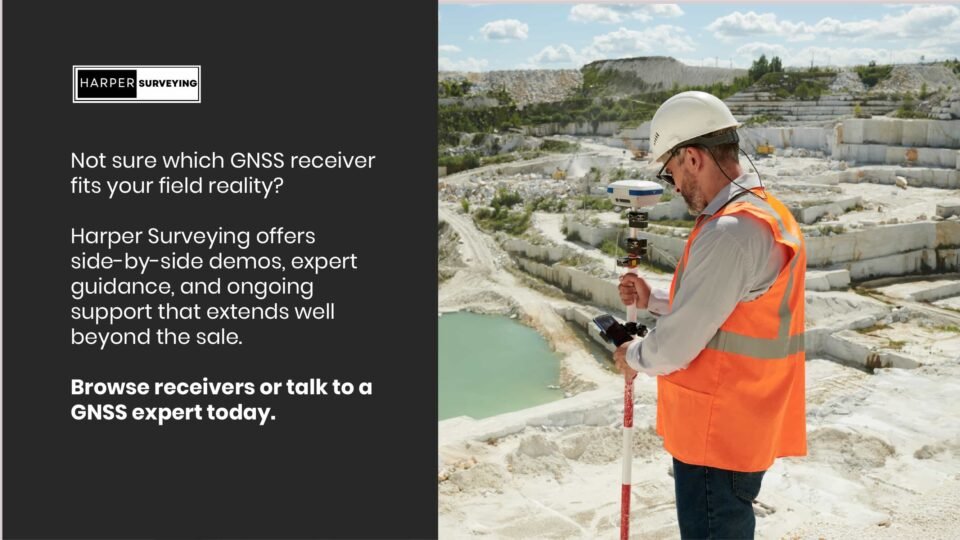
Are you not sure which GNSS receiver fits your field reality? Harper Surveying offers side-by-side demos, expert guidance, and ongoing support that extends well beyond the sale. Browse receivers or talk to a GNSS expert today.